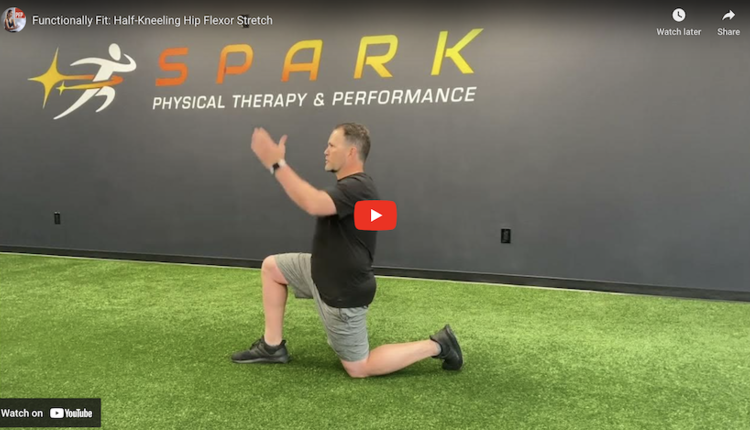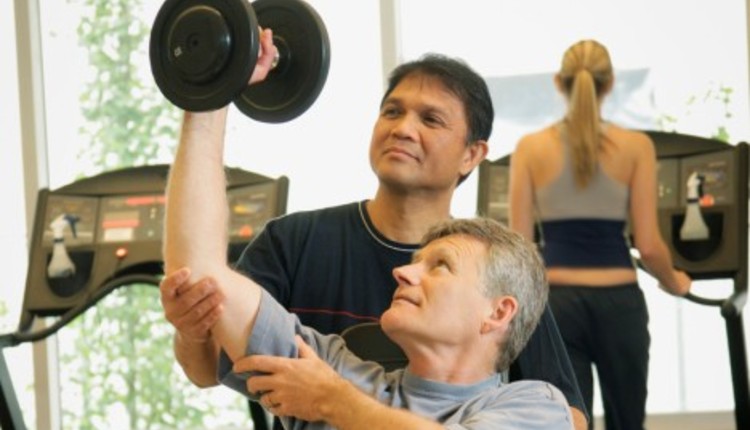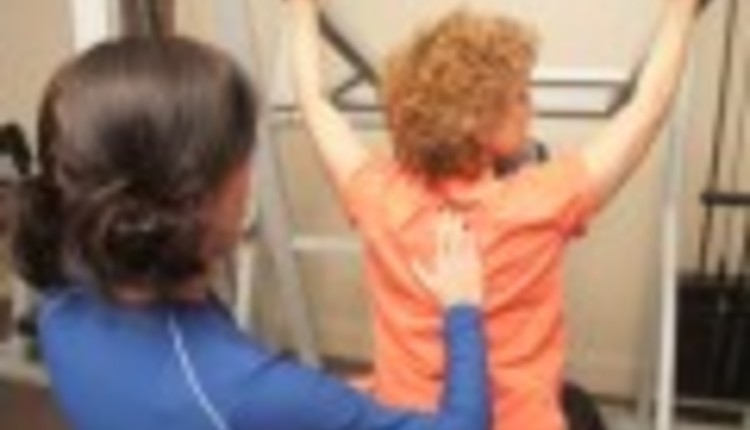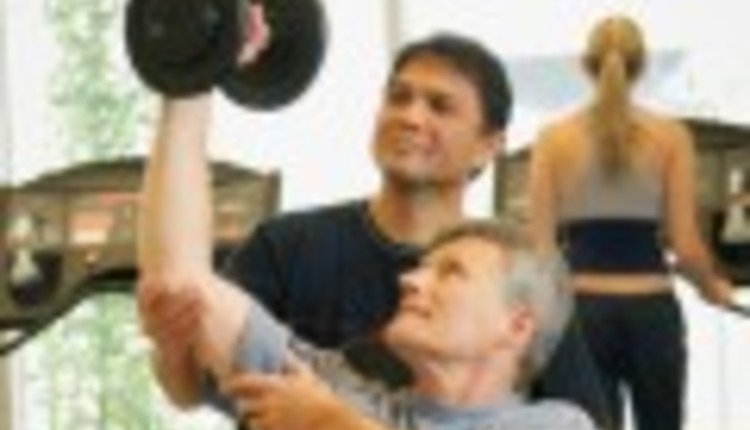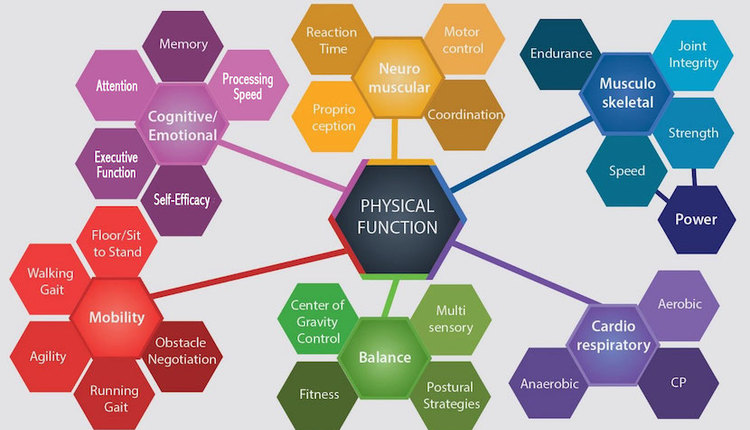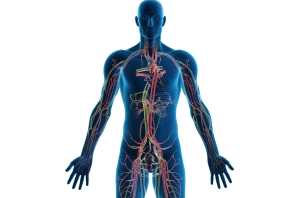
Editor's Note: "The Boomers" is a miniseries on how you can make the baby boomer market successful within your fitness business. Part four, "The Effects of Aging" explores the ways the body changes over time, helping trainers understand what is going on inside the bodies of their older clients.
For more of this series and other articles about this population, see "Related Resources" below.
I used to work out with a trainer friend who is about 12 yearsyounger than me. I was serious about my workouts and liked having someone elsearound who was serious about his workouts too. My friend often thought I wascapable of training at a much higher level than was safe for me and would teaseme whenever I decided to back off to a more doable level. (Fortunately for me,I had enough background to know my limits and was not tempted to try to keep upwith him.) Now, years later, I just had the opportunity to see and talk to myfriend and catch up on how he is doing. One of the first things he told me washow surprised he is as to the difference a decade has made in his trainingprogram. He has a newly found respect for the changes that take place withaging!
That brings me to the title of this article. There are trainers and there are "personal" trainers. A trainer relies on cookie-cutterprograms that do not take into account important differences such as the clientfitness level or age. More often than not, a trainer trains clients strictlythe way the trainer works out. Why is it that a number of so called "personal" trainers don't seem to understandthat everyone is different or recognize that what is good for one person mighttruly be dangerous, or at best, ineffective for another? I speculate this factbegins to sink in for some only after they experience first hand the effects ofaging.
To safely and effectively work with mature adults, trainers should:
- Appreciate how the aging process impacts the organ systems, as well as understand the risk factors associated with chronic diseases.
- Identify dietary changes that may be needed as a result of aging and recognize how diet is related to chronic diseases that become more apparent as people grow older.
- Utilize safe and effective training techniques for the mature adult, including knowledge of guidelines specific to flexibility, endurance and strength training for the aging adult.
- Conduct comprehensive senior health assessment and fitness testing.
- Understand chronic diseases and be able to design and modify programs for clients with specific chronic diseases.
- Identify with what motivates the mature adult and understand how to create an age friendly environment.
The interaction of many factors, including the agingprocess and lifestyle, decreases individual performance potential and increasesthe differences among individuals across their life spans. These differencescan be striking. There are certain changes inthe body that occur universally with age, but we can slow the progression ofmany of these changes with proper diet and exercise. Following is an overviewfor each organ system with respect to aging.
Integumentary (Skin) System
The major functions of this system are protection fromenvironmental hazards and temperature control. Sweat glands become less active, and at the same time,blood supply to the skin is decreased. This combination makes the older adultless able to lose body heat, so overexertion or exposure to extremetemperatures can cause dangerously high body temperatures.
Skeletal System
The major functions of this system are in structuralsupport, protection of soft tissues, mineral storage and blood production. Everyone begins to lose bone mass between the ages of30 and 40. Over this period of time, the number of osteoblasts (bone buildingcells) begins to decline, while the number of osteoclasts (cells that breakdown bone) remains the same.
Muscular System
The major functions of this system are locomotion,support and heat production. We are referring to skeletal muscle only (notcardiac or smooth muscle). As thebody ages, there is generally a reduction in the size and power of all muscletissues. In particular, skeletal muscle fibers become smaller in diameter.
Nervous System
The major function of this system is to directimmediate responses to stimuli by coordinating the activities of other systems.With aging, reaction times slow andreflexes become weaker. There is a decrease in the precision of motor control,and it takes longer to perform a given motor pattern than it did 20 yearsearlier.
Endocrine System
This system's major function is to direct long-termchanges in the activities of other organ systems through the production ofhormones. The most dramatic change isthe decline in the concentration of reproductive hormones. In addition,age-related changes in other tissues affect their ability to respond tohormonal stimulation.
Cardiovascular System
The main function of this system is the internaltransport of cells and dissolved materials, including nutrients, wastes andgases. Aerobic capacity decreases by50% between ages 20 and 80, because maximum cardiac output decreases by 25% andperipheral O2 utilization decreases as muscle mass and strengthdecrease.
Lymphatic (Immune) System
The major function of the immune system is defenseagainst infection and disease.With advancing age, the lymphatic system becomes lesseffective at combating disease and fighting off infections. The net result isan increased susceptibility to viral and bacterial infections.
Respiratory System
The major function of this system is the delivery ofair to sites in the lungs where gas exchange can occur between the air andcirculating blood. Regular aerobictraining can substantially slow the age related decline in VO2 max. Theage-related decrease in aerobic exercise capacity is due only in part topulmonary changes and is mostly due to altered cardiovascular responses.
Digestive System
The major functions of this system are the processingof food and the absorption of nutrients, minerals, vitamins and water. Because of the large functional reserve capacity ofmost of the gastrointestinal (GI) tract, aging has relatively little effect onGI functioning.
Urinary System
The major function of this system is the eliminationof excess water, salts, and waste products. A decrease in the glomerular filtration rate, or the rate at whichblood is forced through and filtered by the renal corpuscle in the kidneys, isthe most important functional defect caused by aging.
Reproductive System
The main function of this system is to produce sexcells and hormones. The most strikingage-related changes in the female reproductive system occur at menopause, whilechanges in the male reproductive system occur more gradually and over a longerperiod of time.
Yes, inevitably changes do occur with age. However, howsuccessfully a person ages is 1/3 genetics and 2/3 lifestyle. You, as a personal trainer, can play a significant rolein helping your client slow the rate of progression of most all of thesechanges through proper diet and exercise!
Imagine the possibilities! Are you ready?
TammyPetersen is the founder and managing partner for the American Academy of Healthand Fitness (www.aahf.info). She haswritten two books on older adult fitness and designs continuing educationprograms focusing on older adults and youth fitness .For more information on these programs, please visit our online shop.



